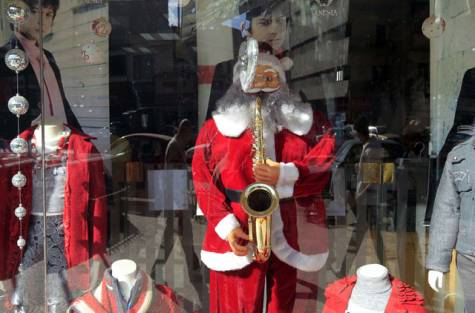After being away from her native country for 45 years, the Dutch-Iraqi artist Afifa Aleiby returns to the Arab world and opens her new exhibition, “Stations of Alienation”, for the first time in Egypt.
The exhibition will be running until 30 November. It displays 30 paintings chosen by Aleiby to represent her long and diverse artistic career.

Aleiby was born in Basra in southern Iraq in 1953. She studied art at the Institute of Fine Arts in Baghdad, before leaving Iraq for the Soviet Union in 1974 to study and specialize in monumental art at the renowned Surikov Institute in Moscow. Then, she went to Italy to continue her studies.
Later, Aleiby settled in Yemen to work as a teacher at the Institute of Fine Arts in Aden. She illustrated children’s books and magazines. Aleiby now lives and works in the Netherlands, and keeps contributing to cultural activities in support of the Iraqi and international democratic movement, and the struggle against terrorism, racism, war, and dictatorship.
Aleiby has participated in numerous exhibitions throughout her career in Iraq, Russia, Yemen, Italy, Syria, Lebanon, England, and the United States. The United Nations acquired one of her paintings, which was donated by a Dutch feminist organization.

Daily News Egypt interviewed Aleiby at her exhibition to learn more about her long artistic career and the secret behind using women figures in her paintings.
Do you use your paintings to shed light on women’s issues?
I am interested in human issues, not only women’s, but I use women figures in my paintings because they are important for me to express the idea I want to convey.
I use the female figure in my paintings because it is able to present different dimensions of the issues I address in these paintings.
I am a huge supporter of human rights in general, including children’s and women’s rights.
Did you face any challenges throughout your career being an Arab woman working in the plastic art field?
I lived in an open and civilized environment, so I did not face any problems in the field of plastic art. I love my work and I am completely devoted to it.
As an artist of Arab origin who lived in Western countries, can you compare the artistic styles of both environments?
In the Western art, there is openness to everything, with no taboos, but in the Arab world, there are many taboos and “red lines”.
In practice, I feel that I have a lot of freedom in Europe and I can express all the issues that concern me without any problem.
How has the alienation affected the development of Aleiby’s artworks?
I lived more than 45 years of my life as an expatriate. I left Iraq when I was 19 years old. I traveled abroad for study, but I could return home because of the political situation. I kept moving in Europe searching for a source of livelihood.
The paintings displayed in this exhibition are from different periods of my life, from 1986 to 2021.
These paintings represent stages of my development as an artist as well as the progress of my ideas and relationship with the world and the artistic field.

How did the coronavirus (COVID-19) pandemic affect you?
It has had a positive effect on me. I did not find any source of pleasure other than my work in the studio. I worked at my leisure without any disturbance. I also had enough time to work and produce a good group of paintings during the pandemic.
Who are the main characters that influenced you as an artist?
I was born in an artistic family. My siblings are very famous artists in the Arab world. They had a great influence on me. I was also influenced by the Russian and European artistic styles.
Were your paintings affected by the Fauvism art style?
No, my works are far from the Fauvism style, but I describe myself as a romantic realist. I define romantic realism as a mixture of the symbolism of reality and fiction, bearing the artist’s own privacy.







